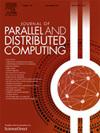Cognitive behavioural characteristics identification for remote user authentication for cybersecurity
IF 3.4
3区 计算机科学
Q1 COMPUTER SCIENCE, THEORY & METHODS
引用次数: 0
Abstract
Nowadays cyber-attacks keep threatening global networks and information infrastructures. Day-by-day, the threat is gradually getting more destructive and harder to counter, as the global networks continue to enlarge exponentially with limited security counter-measures. This occurrence urgently demands more sophisticated methods and techniques, such as multi-factor authentication and soft biometrics to respond to evolving threats. This paper is concerned with behavioural soft biometrics and proposes a multidisciplinary remote cognitive observation technique to meet today’s cybersecurity needs. The proposed method introduces a non-traditional “cognitive psychology” and “artificial intelligence” based approach. According to contemporary cognitive psychology research, human cognitive processes can be affected by many different personal factors and emotional states which are specific to an individual. Those factors mainly include personal perception, memory, decision-making, reasoning, learning, etc. In this study we focus on visual (graphical) perception with the support of graphical stimuli environments and investigate how such personal cognitive factors can be exploited within the cybersecurity area for remote user authentication. This technique enables remote access to the cognitive behavioural parameters of an intruder/hacker without any physical contact via online connection, disregarding the distance of the threat. The results show that cognitive stimuli provide crucial information for a behavioural user authentication system to classify the user as “authentic” or “intruder”. The ultimate goal of this work is to develop a supplementary cognitive cyber security tool for “next generation” secure online banking, finance or trade systems.
面向网络安全的远程用户认证认知行为特征识别
当前,网络攻击不断威胁着全球网络和信息基础设施。随着全球网络继续呈指数级增长,而安全应对措施却有限,这种威胁的破坏性日益增强,也越来越难以应对。这种情况迫切需要更复杂的方法和技术,如多因素认证和软生物识别技术来应对不断变化的威胁。本文关注行为软生物识别技术,提出了一种多学科远程认知观察技术,以满足当今的网络安全需求。该方法引入了一种非传统的“认知心理学”和基于“人工智能”的方法。根据当代认知心理学的研究,人类的认知过程可以受到许多不同的个人因素和个人特定的情绪状态的影响。这些因素主要包括个人感知、记忆、决策、推理、学习等。在本研究中,我们将重点放在图形刺激环境下的视觉(图形)感知上,并研究如何在网络安全领域内利用这些个人认知因素进行远程用户身份验证。这种技术可以远程访问入侵者/黑客的认知行为参数,而无需通过在线连接进行任何物理接触,而不考虑威胁的距离。结果表明,认知刺激为行为用户认证系统将用户分类为“真实”或“入侵者”提供了关键信息。这项工作的最终目标是为“下一代”安全的网上银行、金融或贸易系统开发一种补充的认知网络安全工具。
本文章由计算机程序翻译,如有差异,请以英文原文为准。
求助全文
约1分钟内获得全文
求助全文
来源期刊

Journal of Parallel and Distributed Computing
工程技术-计算机:理论方法
CiteScore
10.30
自引率
2.60%
发文量
172
审稿时长
12 months
期刊介绍:
This international journal is directed to researchers, engineers, educators, managers, programmers, and users of computers who have particular interests in parallel processing and/or distributed computing.
The Journal of Parallel and Distributed Computing publishes original research papers and timely review articles on the theory, design, evaluation, and use of parallel and/or distributed computing systems. The journal also features special issues on these topics; again covering the full range from the design to the use of our targeted systems.
 求助内容:
求助内容: 应助结果提醒方式:
应助结果提醒方式:


